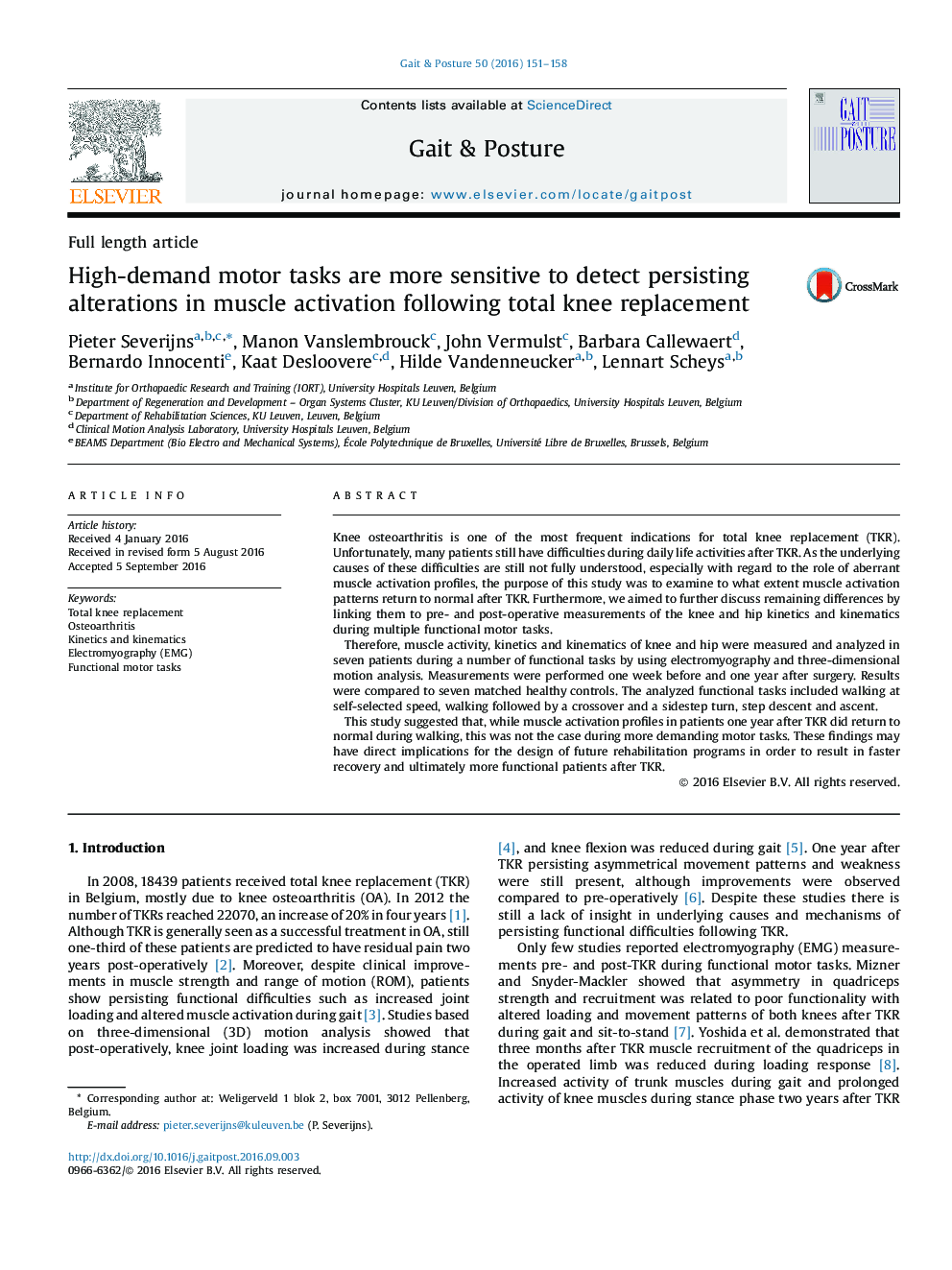| کد مقاله | کد نشریه | سال انتشار | مقاله انگلیسی | نسخه تمام متن |
|---|---|---|---|---|
| 6205324 | 1603845 | 2016 | 8 صفحه PDF | دانلود رایگان |
- This study suggests that muscle activity, kinetics and kinematics normalize during normal walking after TKR.
- Muscle activations tend to remain altered during high-demand motor tasks following TKR.
- More-demanding motor tasks seem to be more sensitive to detect persisting differences after TKR compared to overground walking.
- Differences in EMG patterns can be explained by corresponding differences in kinetics and/or kinematics.
Knee osteoarthritis is one of the most frequent indications for total knee replacement (TKR). Unfortunately, many patients still have difficulties during daily life activities after TKR. As the underlying causes of these difficulties are still not fully understood, especially with regard to the role of aberrant muscle activation profiles, the purpose of this study was to examine to what extent muscle activation patterns return to normal after TKR. Furthermore, we aimed to further discuss remaining differences by linking them to pre- and post-operative measurements of the knee and hip kinetics and kinematics during multiple functional motor tasks.Therefore, muscle activity, kinetics and kinematics of knee and hip were measured and analyzed in seven patients during a number of functional tasks by using electromyography and three-dimensional motion analysis. Measurements were performed one week before and one year after surgery. Results were compared to seven matched healthy controls. The analyzed functional tasks included walking at self-selected speed, walking followed by a crossover and a sidestep turn, step descent and ascent.This study suggested that, while muscle activation profiles in patients one year after TKR did return to normal during walking, this was not the case during more demanding motor tasks. These findings may have direct implications for the design of future rehabilitation programs in order to result in faster recovery and ultimately more functional patients after TKR.
Journal: Gait & Posture - Volume 50, October 2016, Pages 151-158
